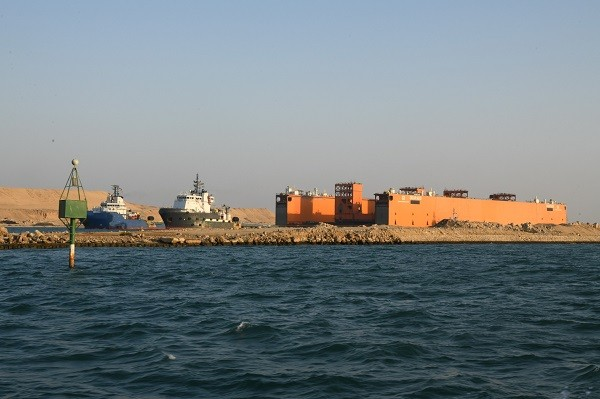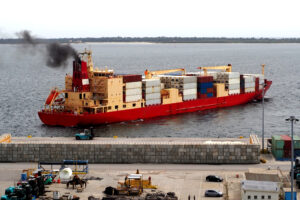
Suez Canal Authority announced the success of the biggest qualitative transit operation in the canal’s history, as the floating dock Dourado transited through the Canal’s new waterway in the northbound convoy.
The dock, 90 meters wide, was towed from the front by two escorting tugs, while piloted by five tugs from the SCA and a team of senior SCA pilots and tugs’ masters during its voyage from Singapore to Turkey.
The transit of the floating dock Dourado is considered one of the non-conventional transit operations, as it is the largest floating unit to transit the Canal by towing, with a total transit length (including the dock and tugs) of 450 meters, a width of 90 meters, and a tonnage of 91,000 tons, according to the Suez Canal statement.
The chairman of the Suez Canal Authority, Admiral Ossama Rabiee, explained that the transit of the floating dock took nearly 24 hours and required several pre-transit procedures, starting with the navigation plan prepared by the Navigation Monitoring Center, followed by discussions and analysis of necessary navigation safety measures for the safe transit of the dock at the SCA’s Simulation and Maritime Training Academy.
An initial inspection of the dock was then conducted at the Suez Anchorage Area by a working group of pilots and tugs’ masters.

Photo credit: Suez Canal Authority (SCA)
Admiral Rabiee noted that the floating dock Dourado would not have been able to transit the Canal without the completion of the Canal’s expansion project as part of the southern sector development project.
Before this expansion, the maximum allowable beam to transit was 70 meters, as per the navigation regulations.
This transit marks the first-ever transit of a floating unit of this width since the completion of the expansion project, which added 40 meters to the Canal’s width on the eastern side, reducing water current effects and enhancing navigation safety in the southern sector.
It has also improved the Canal’s efficiency and capacity to accommodate floating units that previously could not transit.


